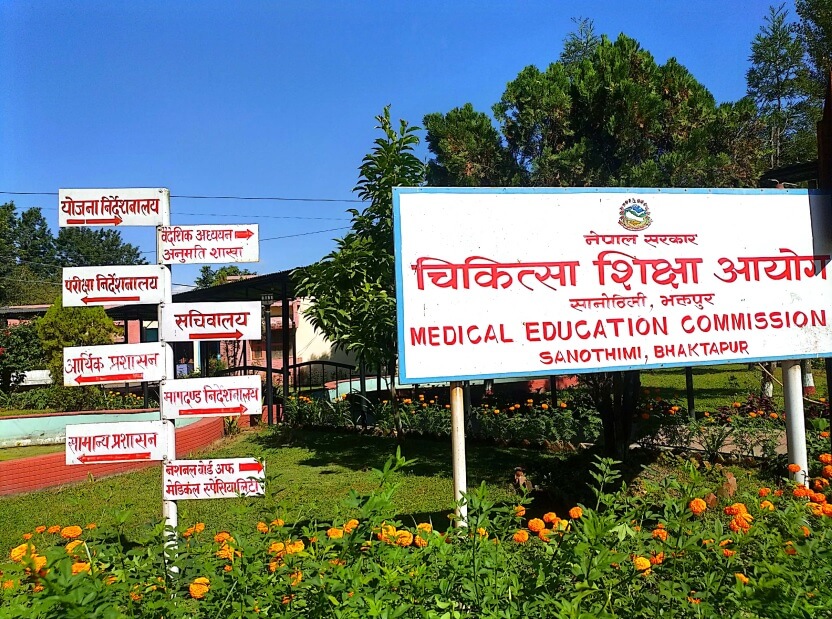
Medical Education Commission Adds 1,394 Seats in Nepal
The Medical Education Commission has increased 1,394 seats in medical education this year to produce skilled manpower domestically. The decision was made at the Commission’s 21st meeting held on Thursday at the Office of the Prime Minister and Council of Ministers, Singha Durbar, under the chairmanship of Prime Minister and Commission Chairperson KP Sharma Oli. The increase aims to meet the growing global demand for Nepali medical doctors.
Focus on MBBS and Nursing
Although medical education in Nepal covers 17 programs, MBBS and Nursing remain the most in demand domestically and internationally. Based on study and research data, 495 seats have been added to MBBS and 440 seats to BSc Nursing.
Prime Minister Oli stated, “Since our country is capable in the field of medical education, we decided to increase MBBS and Nursing seats based on study and research. We can produce skilled medical doctors domestically by providing service-oriented education, as we have adequate infrastructure and affordable quality education. Our aim is to make Nepal a hub for medical education. The seat increase will also allow foreign students to study here, positively impacting our economy.”
Updated Seat Numbers
-
MBBS: Increased from 2,140 to 2,635 seats (added 495).
-
BSc Nursing: Increased from 1,990 to 2,430 seats (added 440).
-
BDS: Increased by 50 seats, now totaling 625.
According to Commission member and President of the Association of Private Health Institutions Nepal (APHIN), Dr. Padma Bahadur Khadka, there are currently 89 institutions—both public and private—offering undergraduate medical education, with private colleges making up about 75% of the total.
Current Health Education Programs in Nepal
The 17 programs under health education include MBBS, BDS, BSc Nursing, BNS, BMS, BPH, BPT, BAMS, BASLP, BSc Radiotherapy, BSc MLT, BSc MIT, BSc Clinical Psychology, BPharm, BSc Midwifery, BOptometry, and AOM. This year, BMS seats have been reduced from 100 to 65.
Scholarship Provision and Economic Impact
Dr. Khadka noted that the government provides full scholarships to 75% of medical students annually, amounting to about NPR 5 billion, while private medical colleges also offer full scholarships to 10% of enrolled students. He expressed confidence that increasing seats will reduce the need for students to go abroad for MBBS and Nursing, keeping Nepali capital within the country and producing skilled professionals capable of competing in the global market.
He added, “A medical college must have a 100-bed hospital, proper academic and faculty arrangements, and adequate land—150 to 200 ropani in the hills or 20 bigha in the Terai. Establishing such a college requires at least NPR 1 billion. The seat increase will help sustain colleges and create a positive environment for students to access quality medical education domestically.”
CTEVT Seat Allocation Finalized
Meanwhile, the Commission’s 20th meeting on Asar 32 had decided to increase seats for health education programs under the Council for Technical Education and Vocational Training (CTEVT) at the certificate level. With 11 new institutions approved in the previous meeting and 5 more in the 21st meeting, there are now 280 technical institutions operating health education programs under CTEVT.
According to CTEVT Member Secretary Mahesh Bhattarai, around 25,000 students apply for PCL Nursing annually, but the seat capacity is about 2,200. “The meeting only reopened affiliation for previously suspended colleges, adding just 40 seats. Nursing remains highly popular, but our institutions still cannot meet the demand. The final seat allocation has been decided, and from Friday, provincial offices will begin sending students to institutions based on SEE scores and merit ranking,” Bhattarai said.
Medical Education Commission (MEC)

